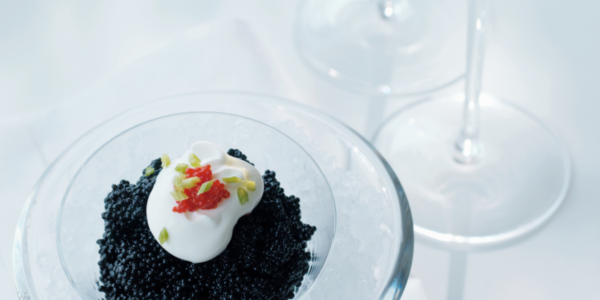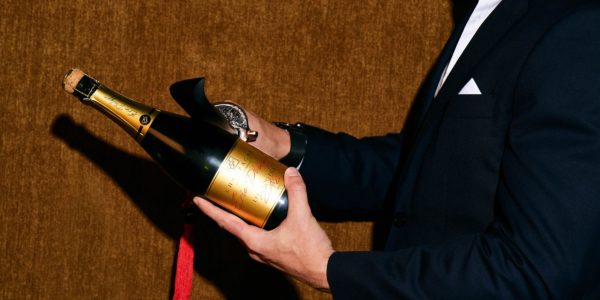
Champagnes Worth Sharing
Honed from 300 years of winemaking experience over nine generations in Champagne, FR, our wines come exclusively from our Grand Cru and Premier Cru vineyards, known for their prestige, complexity, and refined flavor. To ensure the integrity of our wines, we elect to produce in reserved quantities resulting in the finest wines in the art form.
Santé


9 Generations
In an effort to produce Champagne of the highest quality in the region, we aligned with Nicolas Maillart to produce our Champagne Eric Philippe. The origins of the Maillart family’s Champagne date back to 1720 when the family’s first producer, Nicolas, began growing grapes and making wines. The family’s Champagne origins are confirmed by the archives of the village of Chamery. For almost 300 years, the family has passed down its expertise and knowledge from father to son for 9 generations.
Nicolas Maillart now carries on the family’s legacy making award winning Champagnes. Nicolas has been producing since his early 20s after spending his academic career preparing himself to take over the family business. He focused on higher technical diploma in viticulture-oenology in Bordeaux, followed in 1998 by oenology and agricultural engineering studies in Montpellier. These two complementary qualifications provided him with a solid basis on which to work both in the vineyard and the winery. He also went abroad to learn about techniques and practices used elsewhere, travelling first to Oregon – home of the USA’s best Pinot Noir – in 2000, and to South Africa in 2002, a choice motivated by its climatic similarity to Champagne and because of the outstanding quality of its white wines. Armed with family expertise and his own knowledge, Nicolas perpetuates the family tradition with the aim of maintaining the House philosophy – to bring out the potential of each terroir and enhance the flavors of the grapes in this wine which is so symbolic of conviviality and pleasure.

A Refined Taste
We believe in the concept of “Less is More.” Our Champagnes are crafted using as little dosage as possible to promote the wine’s quality while simultaneously rounding out the flavor. Our Non-vintage, Vintage, and Rosé wines are 1 g/L, 4 g/L, and 7 g/L, respectively.
All Champagne is labeled with a word that indicates its sweetness level call. The sweetness in Champagne is unlike sweetness in the wine because this sweetness comes in the form of a sweetened “dosage” (a mixture of wine and sugar or grape must) that’s added to the wine at the end of its second fermentation (the part that makes the bubbles). The reason there is a dosage in Champagne is because the acidity is usually so high, the wine would otherwise be undrinkable. The sweetness comes from a step in the Champagne-making process called “dosage” (“doe-sazj”), which is when a small amount of sugar or grape must is added back into the wine before corking the wine. The dosage is measured in grams per liter or g/L

Terroir
Our 8.5 hectares of vines (70% Pinot Noir and 30% Chardonnay) are planted on the Montagne de Reims – the home of Champagne’s Pinot Noir vines – in three outstanding villages, allowing us to integrate a variety of nuances in flavour.

Grand Cru & Premier Cru
In Champagne, Grand Cru refers to villages classified at 100-percent on the old and now non-existent Échelle des crus (“Ladder of Growth”), which was a classification used to determine the pricing of grapes. When the Échelle des Crus was first established, only 12 villages received Grand Cru status. In 1985 that number was expanded to 17 with the promotion of five villages. Less than 9% of all the planted vineyard land in Champagne has received a 100% Grand cru rating.
Although the Échelle des Crus has been abolished, the terms grand cru and premier cru are still officially used, and these villages continue to enjoy a high level of prestige. Note that in Champagne, the term Grand Cru indicates a classification by village, and not by vineyard, as in Burgundy. In order to label a wine as Grand cru, it must be sourced entirely from vineyards in Grand cru villages. In addition, pinot noir and chardonnay are the only two grapes eligible for Grand cru status. While other varieties may be planted in grand cru villages, they are not entitled to the Grand cru designation.
All of the Grand Cru and Premier Cru villages are located in the Marne department. Large scale production Champagnes by practice are NOT Grand Cru or Premier Cru as Grandes Marques require vast quantities of grapes and blend from hundreds of vineyards throughout Champagne. We chose to craft reserved quantities from our Grand Cru and Premier Cru vineyards to create the finest quality wines in Champagne.

Join the Club

Get the Newsletter
Recent News
- Champagne and Caviar – A Classic PairingThe king and queen of luxury: Champagne and caviar. Is there anything more indulgent, outrageous, or delicious? This classic pairing has been enjoyed throughout history, but what technically is caviar? …
- The Art of SabrageChances are, you’ve been at a party and experienced the oohs and ahhs, the gasp of anticipation, the cheers of success as someone bravely runs a sword over a bottle …
- Santé Magazine: Taylor Rothchild, Wine Industry’s One to Watch in 2020His mission is simple: Create Wines and Champagnes worth sharing. With a long family history and intense passion at its core, each bottle from Tayson Pierce Estate Wines possesses a …











